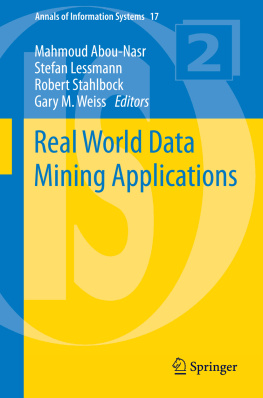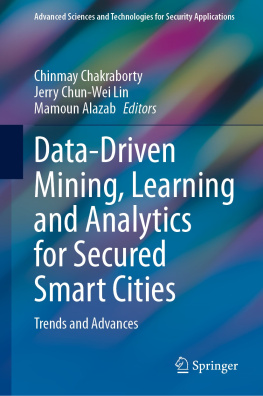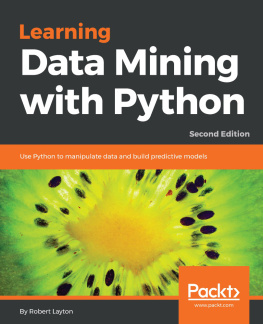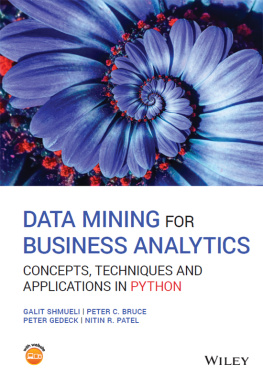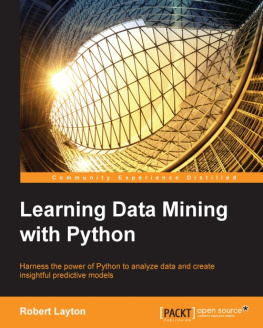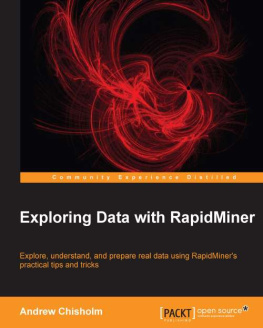Abstract
Data Mining involves the identification of novel, relevant, and reliable patterns in large, heterogeneous data stores. Today, data is omnipresent, and the amount of new data being generated and stored every day continues to grow exponentially. It is thus not surprising that data mining and, more generally, data-driven paradigms have successfully been applied in a variety of different fields. In fact, the specific data-oriented problems that arise in such different fields and the way in which they can be overcome using analytic procedures have always played a key role in data mining. Therefore, this special issue is devoted to real-world applications of data mining. It consists of eighteen scholarly papers that consolidate the state-of-the-art in data mining and present novel, creative solutions to a variety of challenging problems in several different domains.
This introductory statement might appear rather strange at first glance. After all, this is a special issue on data mining. So how could it be dead, and why? And isnt data mining more relevant and present than ever before? Yes it is. But under which label? We all observe new, more glorious and promising concepts (labels) emerging and slowly but steadily displacing data mining from the agenda of CTOs. This is no longer the time of data mining. It is the time of big data, X-analytics (with X {advanced, business, customer, data, descriptive, healthcare, learning, marketing, predictive, risk,}), and data science, to name only a few such new and glorious concepts that dominate websites, trade journals, and the general press. Probably many of us witness these developments with a knowing smile on their faces. Without disregarding thesometimes subtledifferences between the concepts mentioned above, dont they all carry at their heart the goal to leverage data for a better understanding of and insight into real-world phenomena? And dont they all pursue this objective using some formal, often algorithmic, procedure? They do; at least to some extent. And isnt that then exactly what we have been doing in data mining for decades? So yes, data mining, more specifically the label data mining, has lost much of its momentum and made room for more recent competitors. In that sense, data mining is dead; or dying to say the least. However, the very idea of it, the idea to think of massive, omnipresent amounts of data as strategic assets, and the aim to capitalize on these assets by means of analytic procedures is, indeed, more relevant and topical than ever before. It is also more accepted than ever before. This is good news and actually a little funny. Funny because we, as data miners, now find ourselves in the position statisticians have been ever since the advent of data mining. New players in a market that we feel belongs to us: the data analysis market. It may be that the relationship between data mining and statistics, which has not always been perfectly harmonic, benefits from these new players. That would just be another positive outcome. However, the main positive point to make here is that we have less urge to defend our belief that data can tell you a lot of useful things in its own right, with and also without a formal theory how the data was generated. This belief is very much embodied in the shining light of big data and its various cousins. In that sense, we may all rejoice: long live data mining.
After this casual and certainly highly subjective discussion which role data mining plays in todays IT landscape and how it relates to neighboring concepts, it is time to have a closer look at this special issue. While various new terms may arise to replace data mining, ultimately the field is defined by the problems that it addresses. Problems are in fact one of the defining characteristics of data mining and why the data mining community formed from the machine learning community (and to a much lesser extent from the statistics community). Machine learning methods for analyzing data have generally eschewed other methods, such as approaches that were mainly considered to be statistical (e.g., linear and logistic regression although they now are sometimes covered in machine learning textbooks). Furthermore, much of the work in machine learning tended to focus on small data sets and ignore the complexities that arise when handling large, complex, data sets. To some degree, data mining came into being to handle these complexities, and thus has always been defined by real-world problems, rather than a specific type of method. But even though this is true, it is still often difficult to find comprehensive descriptions of real-world data mining applications. We attempt to address this deficiency in this special issue by focusing it on real-world applications and methods that specifically address characteristics of real-world problems.
The special issue strives to consolidate recent advances in data mining and to provide a comprehensive overview of the state-of-the-art in the field. It includes eighteen 18 articles, some of which were initially presented at the International Conference on Data Mining (DMIN) in 2011 and 2012. All articles had to pass a rigorous peer-review process. Especially the DMIN conference papers had to be revised and extended by adding much new material prior to submission to the special issue. The best articles coming out of this process have been selected for inclusion into the special issue. Every article among the final set of accepted submissions is a remarkable proof of the authors creativity, diligence, and hard work. Their countless efforts to turn a good paper into an excellent one make this special issue a special issue.
The articles in the special issue are concerned with real-world data mining applications and the methodology to solve problems that arise in these applications. Accordingly, we group the articles in this special issue into different categories, depending on the application domain they consider. The five articles in Part I consider classic data mining tasks such as supervised classification or clustering and propose methodological advancements to address important modeling challenges. For example, the contributions of these articles could be associated with novel algorithms, modifications of existing algorithms, or a goal-oriented combination of available techniques, to enhance the efficiency and/or effectiveness with which the data mining task in question can be approached. Although such advancements are typically evaluated in a case-study, the emphasize on well-established data mining tasks suggests that the implications of these articles and the applicability of the proposed approaches in particular may reach well beyond the case-study context. The articles in the following parts of this book focus even more on the application context. Looking into modeling tasks in management (Part II), fraud detection (Part III), medical diagnosis and healthcare (Part IV), and, last but not least, engineering (Part V), these articles elaborate in much detail the relevance of the focal application, what challenges arise in this application, and how these can be addressed using data mining techniques. The specific requirements and characteristics of modeling a problem will often necessitate some algorithmic modification, which is then assessed in the context of the specific application. As such, the articles in this group provide valuable advice advice how to tackle challenging modeling problems on the basis of available technology.

